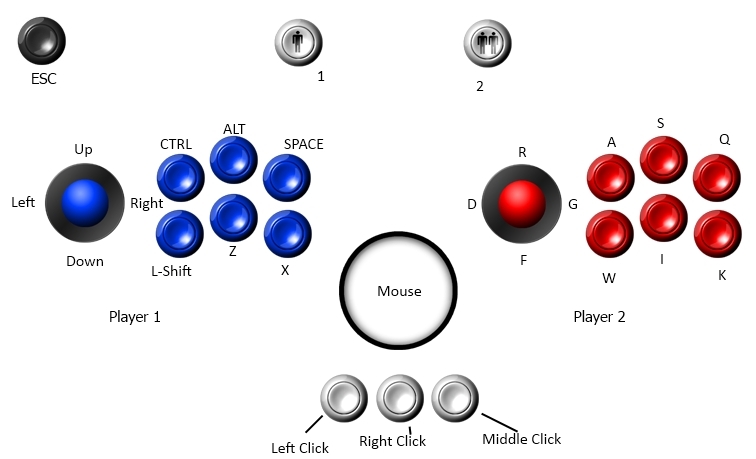
Mame 4 way emulation how to#
Brow at Raising the Brow wrote a guide on how to make MAME smarter about translating analog stick movement to four-way inputs: MAME prevents unintentional diagonal inputs by giving horizontal inputs priority, but this can cause unintentional horizontal inputs instead, especially if you’re using an analog stick. Unfortunately, there aren’t many great options for emulating them. These are archaic devices that didn’t see a lot of use after 1984. Pac-Man restricts diagonals with a diamond-shaped gate that can be easily ridden from corner to corner, while Donkey Kong uses a plus-sign shaped gate that makes touching diagonals physically impossible. Instead, here's a list of games that support three or more simultaneous players with this input scheme:Īs I mentioned above, these are logically identical to an eight-way joystick, but isn’t designed to allow you to hit diagonals, and the games aren’t programmed to recognize them. Analog thumbsticks work too, but are too imprecise for my liking.Īs this is such a common input scheme, I won't list the games that use it. When arcade controls aren’t available, I prefer using a controller’s d-pad. The diagonals are not their own inputs, but rather a function of the game’s programming to recognize when two perpendicular switches are hit at once, which is physically difficult or impossible on a four-way stick.

Both involve a stick positioned to hit four directional switches that are wired to four inputs on the PCB. I won’t be getting into this level of detail here.įrom a game logic perspective, there’s no difference between this and a four-way joystick. There’s a lot more nuance to these controllers than a casual player might think – for instance, an ideal fight stick will have a square-shaped gate to aid hitting the diagonals, while a more general purpose stick will have a circular one for easier edge-riding. They’re there, they require specialized controllers or clumsy keyboard-mapping, and I don’t really care about them or expect that many reading Data Driven Gamer would either.Īn eight-way joystick with pushbuttons is by far the most common type of controller configuration in MAME, and are generally not any trouble to map to a gamepad, or keyboard, or whatever. I’m not interested in the 900+ Gambling/Mahjong/Hanafuda machines in MAME. A very large amount of useful data came from the now defunct “controls.dat” project.Īdditionally, the ongoing Nplayers project categorizes games based on not just the number of players, but also on whether they are simultaneous, alternating, or if it’s more complicated than that. Most of my data comes from MAME’s own XML output, but this is often incomplete or inaccurate from a user’s standpoint. I wrote this as a guide and partial catalog on MAME’s games with unusual or difficult input schemes, with the assumption that the reader has access to modern gamepads with dual analog sticks and trigger-style shoulder buttons. This covers most of my bases, but not all, and is probably much more than what the vast majority of players have access to.
Mame 4 way emulation plus#
Some time ago, I built an arcade control panel with a Street Fighter-style layout, plus a trackball, spinner, 4-way joystick, and extra buttons mapped to useful keyboard inputs.

What do you do about those? Sometimes you can fake them with common input devices, and sometimes you really need specialized hardware. Those weird fishing rod controllers with a bunch of spinning doo-dads. The gamepad is flexible enough to handle a wide variety of other configurations as well – shoulder buttons are there when you need more than four action buttons, and the dual analog sticks work for twin-stick shooters like Robotron and Smash TV, or you can use the d-pad in conjunction with the face buttons to simulate having a second d-pad, relegating shoulder buttons for actions (if you still need them).īut then there are all those other types of controls. Most of the time, they translate pretty well to a gamepad – by far the most common coin-up configuration involves dual-player 8-way joysticks, each with 1-4 pushbuttons, which any modern gamepad can accommodate with its d-pad and four face buttons, while select/start can serve as coin and start inputs. Arcade games had a wide variety of controls.


 0 kommentar(er)
0 kommentar(er)
